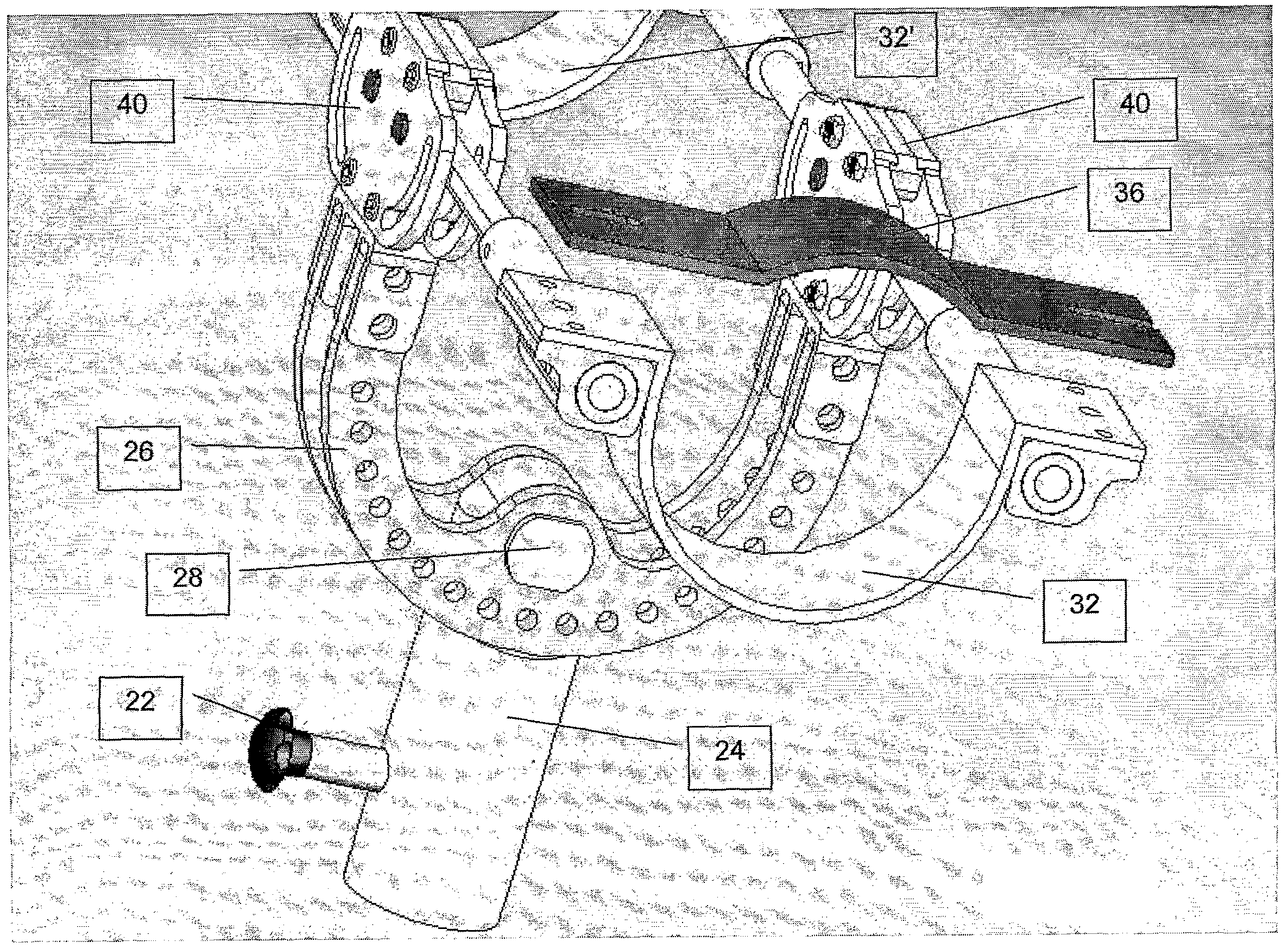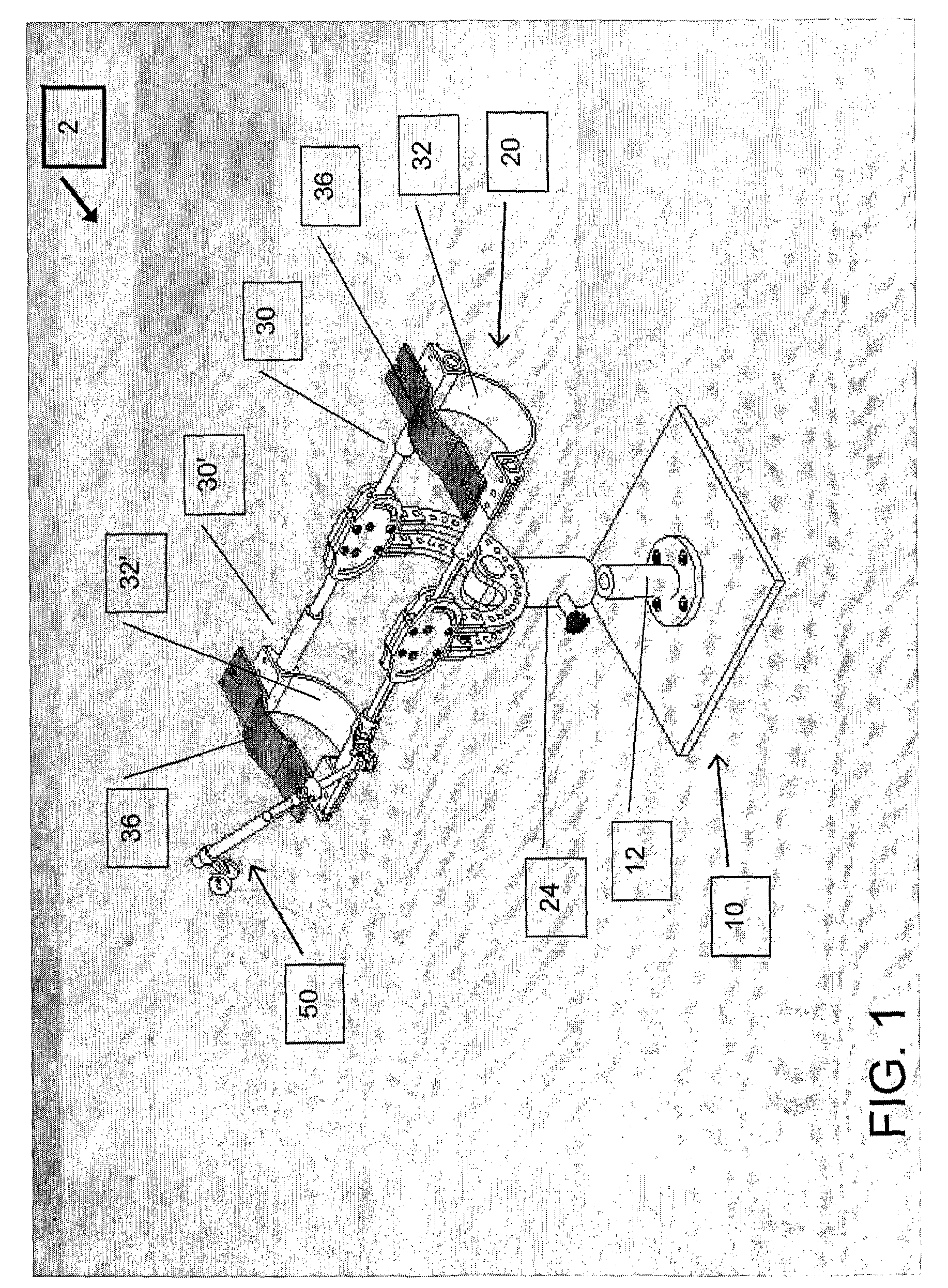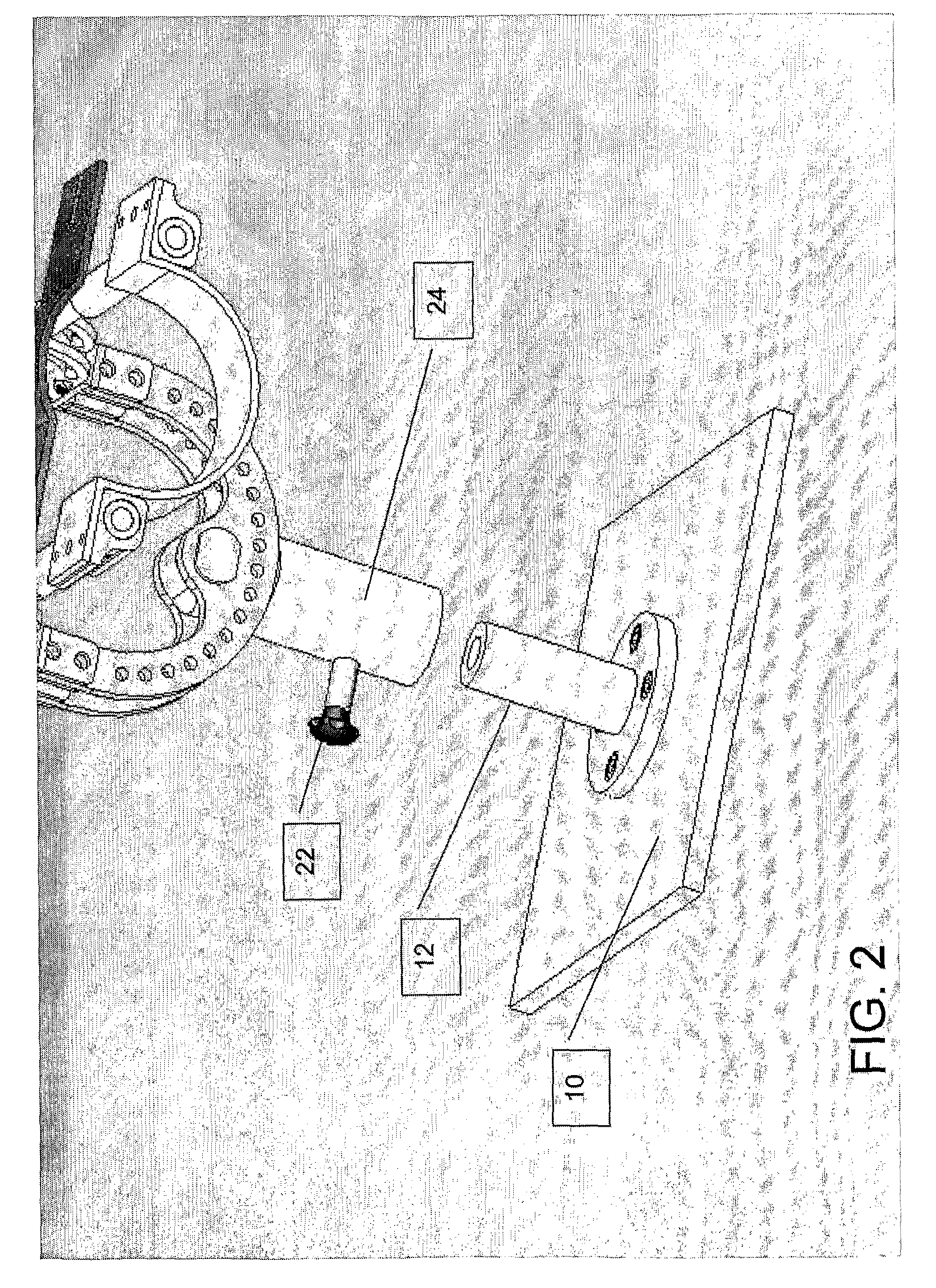Device for stable spatial fixation and central drilling with distal interlocking screws in limb procedures
a technology of spatial fixation and central drilling, which is applied in the field of devices for stabilizing an injured limb, can solve the problems of inability to predict the exact location of the target hole, the difficulty of locating the distal locking hole, and the spatial holding problem too
- Summary
- Abstract
- Description
- Claims
- Application Information
AI Technical Summary
Benefits of technology
Problems solved by technology
Method used
Image
Examples
Embodiment Construction
[0032]The present invention is a device for the stabilization of the injured limb from initial contact by medical personnel, during transportation and onto the operating table
[0033]The principles and operation of a device for the stabilization of the injured limb according to the present invention may be better understood with reference to the drawings and the accompanying description.
[0034]By way of introduction, the device of the present invention provides satisfactory and comfortable three-dimensional spatial holding of an injured limb and allows for the spatial transition of the limb from position to position in accordance with the surgeon's requirements comfortably, easily and within a short time period. Since it is know that there is a direct correlation between the length of the medical procedure and healing time, by shortening the time of the of the operation, the device of the present invention also aids in the healing process.
[0035]Further, the device enables the temporary...
PUM
 Login to View More
Login to View More Abstract
Description
Claims
Application Information
 Login to View More
Login to View More - R&D
- Intellectual Property
- Life Sciences
- Materials
- Tech Scout
- Unparalleled Data Quality
- Higher Quality Content
- 60% Fewer Hallucinations
Browse by: Latest US Patents, China's latest patents, Technical Efficacy Thesaurus, Application Domain, Technology Topic, Popular Technical Reports.
© 2025 PatSnap. All rights reserved.Legal|Privacy policy|Modern Slavery Act Transparency Statement|Sitemap|About US| Contact US: help@patsnap.com



